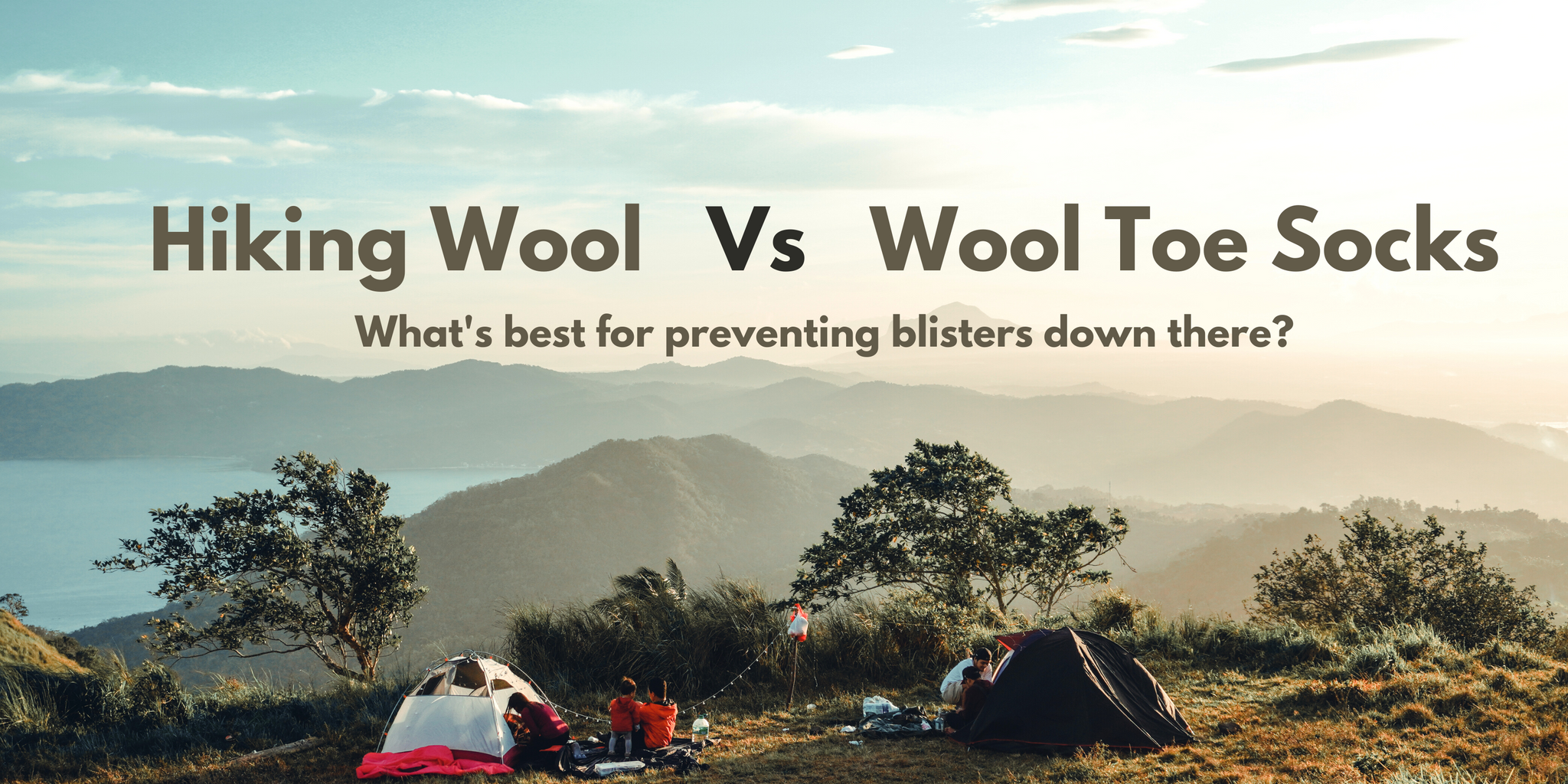Hikers Wool or Merino Toe Socks? The best blister prevention options for hiking and running the trails
If you’ve been on a long hike or trail run, there’s a very, very good chance you know about toe blisters. The skin on skin contact of your toes over thousands of steps builds up oh so much friction and heat leading to… hot spots and eventually blisters! It’s big drawback and can make it bloody uncomfortable on the way home and over the next few days. Fortunately, though there’s solutions to minimize the skin on skin contact and sort out this unnecessary problem with either wool toe socks or hikers wool being the two best options to beat blistered up, taped up toes.
We going to dig deep on the benefits and negatives of them hikers’ wool and merino wool toe socks, how they really work to reduce, if not stop blisters and hit on a few other options that can also have a big impact in making your feet more comfortable when you next hit the trails.

What causes Blisters when Hiking and Running?
Blisters are caused by friction. The more friction between two surfaces, the more heat is created and that’s also the key to figuring out how to reduce or prevent blisters. In standard socks and shoes, our toes remain in contact with each other a lot of the time and skin on skin contact and the repetition our steps really building up!
Our skin is not a low friction surface and that becomes even more pronounced when we add moisture into the mix. Combine this with regular socks that draw the toes together with their elasticated, tubular shape and you’ve got a recipe for hot spots and eventually, some potentially nasty and definitely unwanted, blisters.
Not ideal if we’re midway into a multiday hike, mountain marathon or a jaunt on the trails.
But hey, in understanding the problem, we can easily jump another step and say hey, if we can reduce the skin on skin contact and moisture, we have way fewer blisters, right?
Right you are!
Why is wool a great option for between our toes?
Wool has a fantastically low friction coefficient, which varies with the type of wool and the thickness of the strands. I won’t go into it in detail here as I’ve covered this previously, in depth, with research links and all here. Even though synthetic yarn is often touted as “better” for socks because of moisture wicking ability, it really lacks in other areas such as reducing smell, softness, drying speed and, importantly, degree of friction.
The research shows a clear benefit of fine wool, over synthetic fibres in lowering friction, so if we were going to use anything to negate the skin-on-skin contact, it should be wool - fine wool, to be accurate.
This is summed up in a research paper done at Otago University (Van Amber et al., 2014)

We have other reasons use fine wool as well though, with whichever you choose to use to separate your toes, hikers wool or in wool toe socks.
- Wool draws moisture away from the skin, keeping that dry feel, for longer.
- Wool locks away smell molecules and fights athletes foot
- You stay cooler, even when it’s hot by allowing your body to naturally regulate temperature.
- Wool dries fastest, compared to synthetics.
- Wools is soft and comfortable.
- Fine wool has a very, very small diameter, taking up less space, with less bulk.
To read more about how the composition of sock material effects performance, check out our past article: Friction, too much friction
Wool Toe Socks vs Hikers Wool

Let’s lay out the benefits and draw backs of using hikers wool or merino wool toes socks.
Firstly though, here’s what both hikers wool and wool toe sock both do well:
- Minimizes Blisters by reducing friction with use of fine wool.
- Keeps your feet dry by naturally absorbing moisture away from your skin.
- Regulates temperature through good breathability and moisture management.
- Promotes the use of natural, durable and sustainable fine wool.
Wool Toe Sock Benefits
- The wool stays in place and hugs your toes thanks to a thin sleeve around each toe.
- Fine wool strands can be blended with moisture wicking synthetic fibres to gain better performance.
- Last longer
- Less fuss, lightweight and breathable
- Can be used as a liner under regular socks, if they’re lightweight (example)
Wool Toe Sock Negatives
- One size fits most, so don’t always fit those people with short stumpy or really long toes
- Some brands have seams on the toe sleeves - increasing irritation and blisters.
- *Be sure to buy seamless toe socks for the best blister protection - see example here
- Less padding than a lot of traditional hiking socks, if you prefer a lot of padding, they may not be for you
Hikers Wool Benefits
- Can be used with regular socks.
- Adds cushioning between toes.
- 100% wool (most brands)
Hikers Wool negatives
- Can get expensive.
- Doesn’t stay in place well and can be awkward to use.
- Difficult to clean and reuse.
Conclusion
Both hiking wool and merino wool toe socks are great options for reducing the formation of blisters and hot spots when hiking, trail running or running. Both utilise the numerous benefits of fine wool but hikers wool can be awkward to use due to not being fixed in place as well, whereas merino toe sock have the fine merino yarn blended into the toe sleeves, giving a secure, lasting fit. Merino toe socks and effectively socks, with hikers wool incorporated in.
Our recommendations:
Merino wool toe socks:
- There is no higher rated wool toe sock than Creepers Merino Toe Socks, with seamless toe sleeves, see all verified reviews and purchase HERE
Wool for hikers and runners
- Wuru Wool, premium blister protection wool


